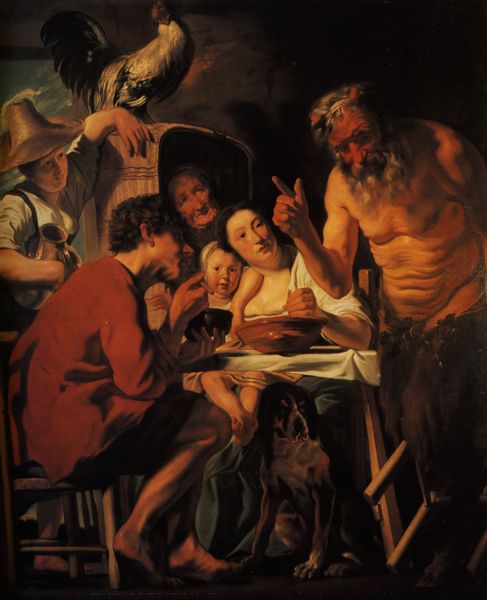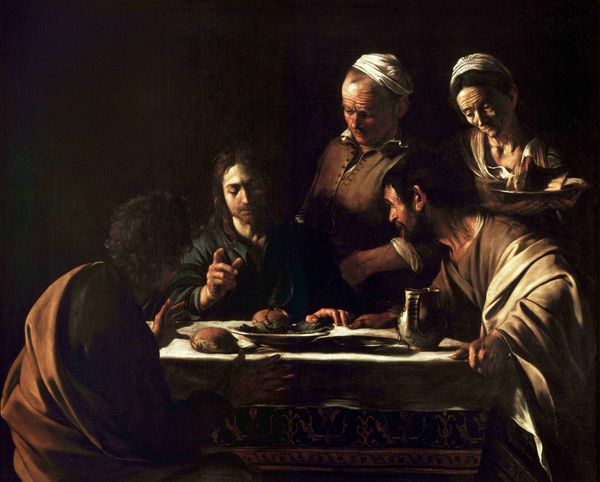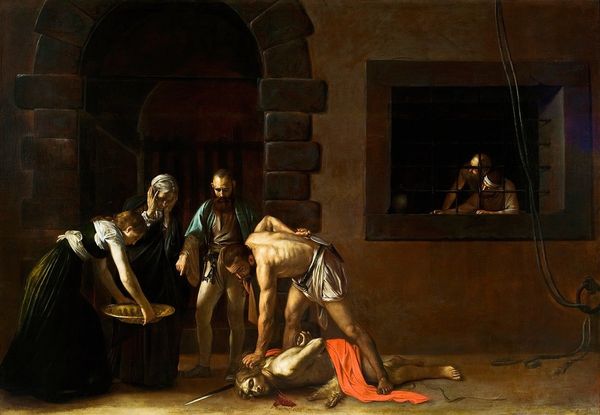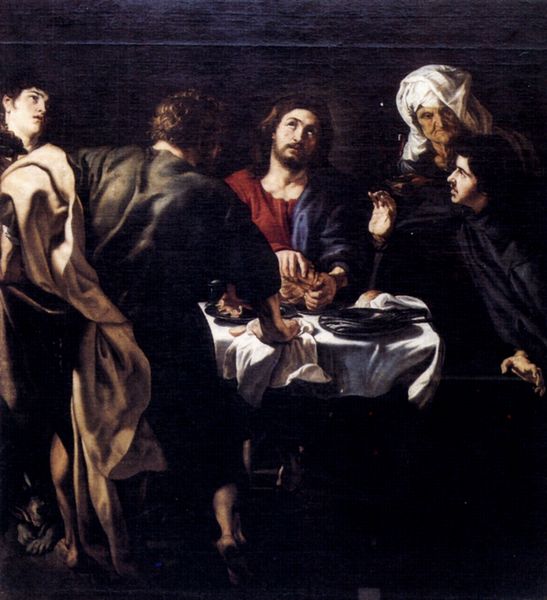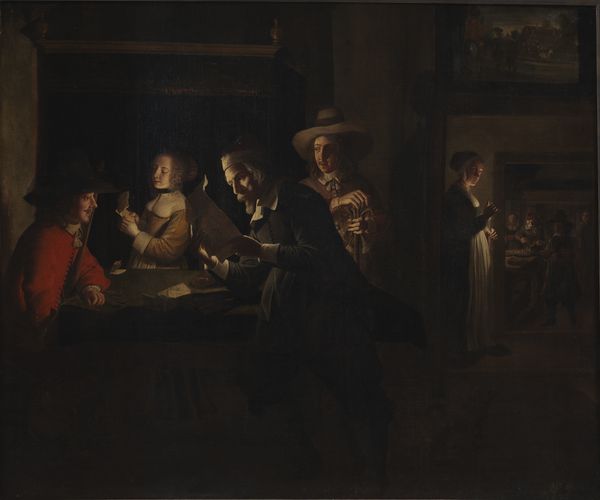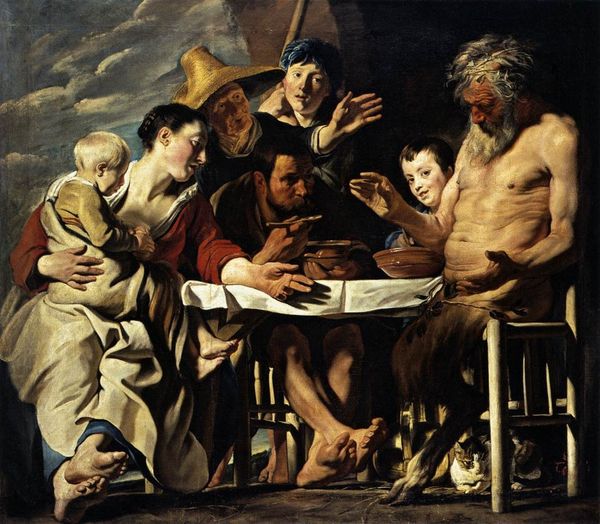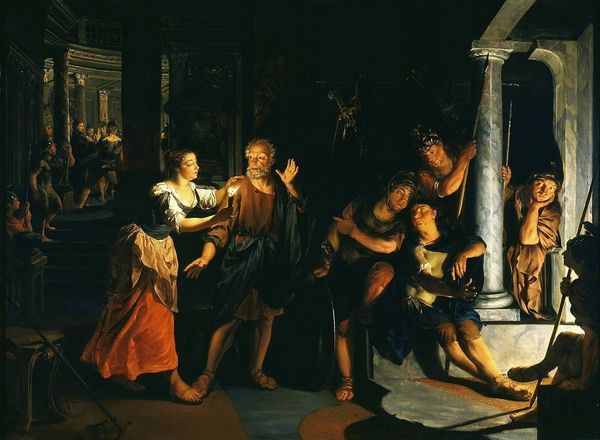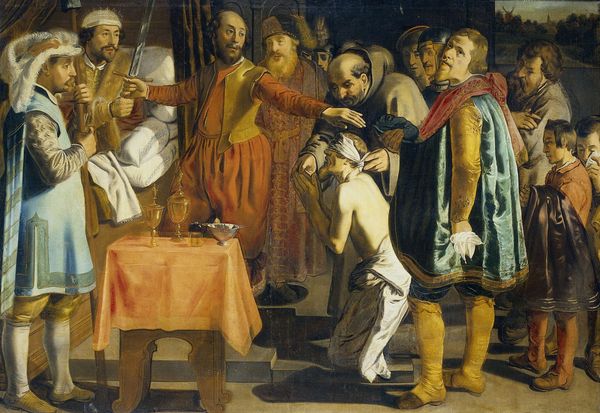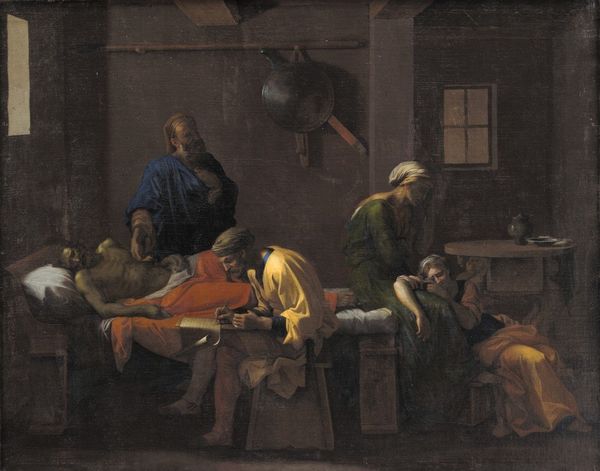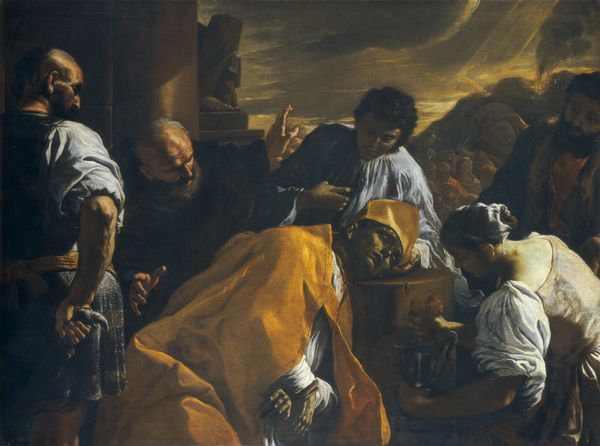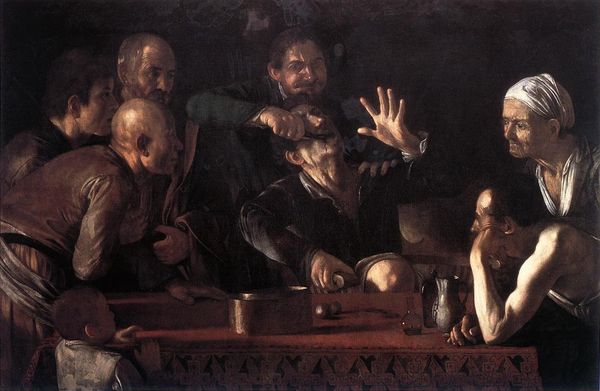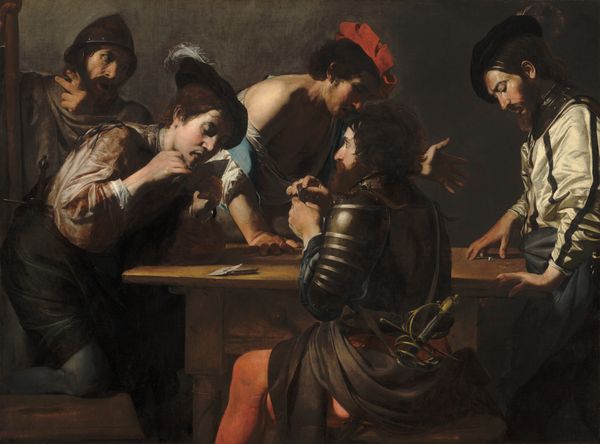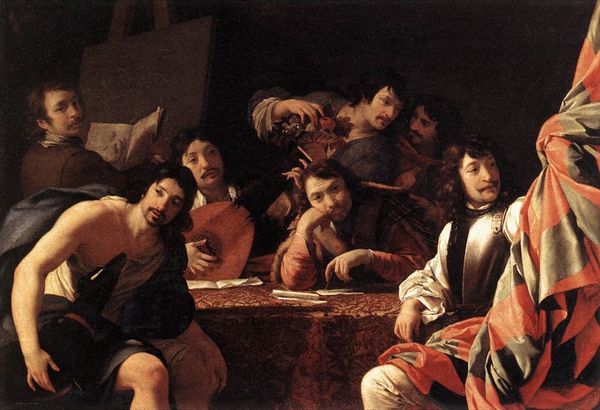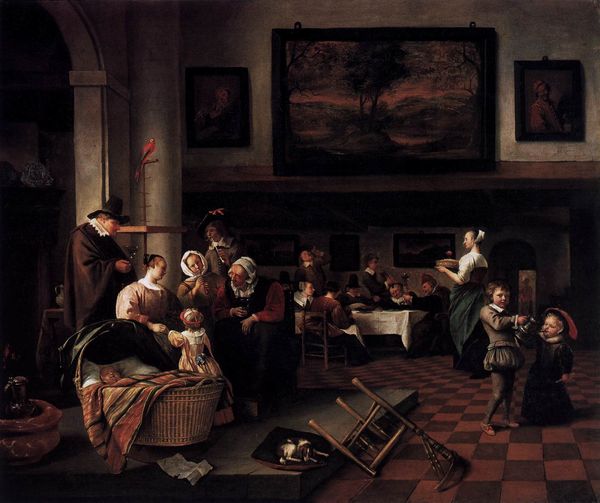
painting, oil-paint
#
baroque
#
painting
#
oil-paint
#
figuration
#
chiaroscuro
#
christianity
#
history-painting
#
italian-renaissance
#
christ
Dimensions: 323 x 343 cm
Copyright: Public domain
Curator: Welcome. Before us is Caravaggio’s "Calling of Saint Matthew," executed circa 1600. An oil painting of considerable dramatic and compositional complexity. Curator: Dramatic is an understatement! It's also remarkably dark. Almost oppressive, yet pierced by that incredibly strong diagonal light. There's a palpable tension between those bathed in light and those consumed by shadow. It makes me consider how power operates in plain sight, yet is unseen by many. Curator: Precisely. Note the artist’s mastery of chiaroscuro. The light doesn’t merely illuminate; it actively models the figures, creating deep contrasts and directing the viewer’s gaze to key narrative elements. The window above serves a dual purpose—structurally anchoring the composition, yet also acting as the literal origin of divine light. Curator: Yes, the symbolic play with light. Caravaggio isn’t just depicting a scene, but highlighting social stratification. Those figures counting money seem oblivious, entrenched in their earthly concerns, while Matthew is being beckoned towards something… more. There's a raw tension there between earthly materialism and spiritual transformation. Curator: Look at the formal echoes between Christ’s gesture and that of the tax collectors pointing at Matthew. A powerful, visual rhyme which elevates this mundane tax office into a theater of divine intervention. Notice the direction of their gazes—how they contribute to the work’s overall dynamism? Curator: And let’s not ignore that these "divine" figures are entering what seems to be a den of inequity and privilege. Tax collectors in that era were rarely popular and were often exploiting the masses. So what does that say about choosing Matthew of all people for sainthood? Curator: It introduces a certain disruptive element, surely, or a formal incongruity. Caravaggio disrupts the idealised portrayals of earlier religious painting with a gritty realism. Notice the clothing, the setting; all are decidedly common. This technique, known as tenebrism, amplifies the dramatic impact of the figures. Curator: And maybe this gritty realism is itself revolutionary, and accessible. This depiction allows everyday viewers of the 17th century to recognise themselves in the narrative. And even prompts reflection upon modern concepts of redemption, agency, and the complex nature of salvation for everyone. Curator: Indeed, it’s a work that masterfully manipulates formal elements to convey complex meanings and it allows us as the audience to read those elements and form conclusions. Curator: Ultimately a very potent commentary for his day but maybe it also speaks to today and finding enlightenment even in unexpected or unlikely situations and times.
Comments
No comments
Be the first to comment and join the conversation on the ultimate creative platform.
